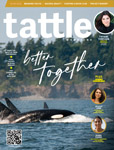Your Footprint Matters
- Our fun day at the beach can lead to disruptions in feeding and nesting routines for marine life such as sea turtles.

Plastic isn’t the only culprit that contributes to harming our beaches, oceans and marine life. In Florida, nesting season for sea turtles occurs between May 1st and October 31st. About 90% of all sea turtle nesting in the United States takes place on Florida’s beaches and it’s estimated that only one in 1,000 hatchlings will survive. Here are a few ways you can help…
Use sea turtle-friendly lights or no lights at all
Nesting and hatchling turtles follow the natural light of the horizon to make it to the surf. Bright lights from beachfront properties can make them wander off track and become easily disoriented.
Avoid attracting unwanted visitors
Make sure to clean up after yourself (really, we should be doing this anyway). Leaving food and trash behind attracts animals such as raccoons, coyotes, dogs and cats who will destroy sea turtle eggs.
Do not disturb sea turtle nesting
It’s important to allow hatchlings to make their way to the water on their own. (It is also illegal to touch sea turtles under both federal and state laws.) When you set up your beach chair, make sure to place it at least five feet away from a marked nesting area.
Make sure to knock down any sandcastles and fill in any holes dug in the sand
Both hatchlings and nesting mothers can get stuck in holes when crawling on the beach. Make sure to remove all beach accessories as well, such as chairs, umbrellas and toys to prevent them from being obstacles.





